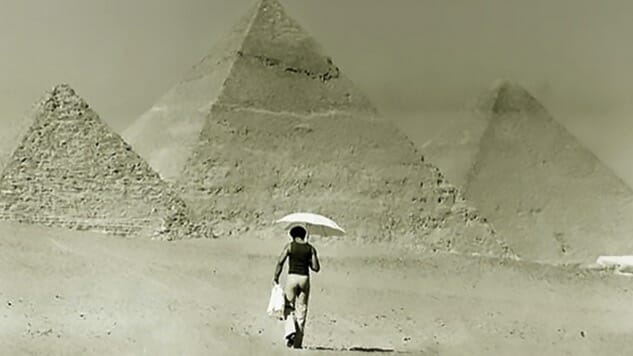Maurice White: The Flame Within Earth, Wind & Fire

If George Clinton’s Parliament-Funkadelic suggested what the Sun Ra Arkestra might have sounded like if fronted by Sly & the Family Stone, Maurice White’s Earth, Wind & Fire hinted at what the Count Basie Band might have sounded like if fronted by the Temptations. The two organizations dominated funk music during the 1970s, and with their propulsive rhythms, extended solos and contrapuntal horn charts, they were big bands for a new era.
White’s death last Wednesday at age 74 after a long bout with Parkinson’s disease was a belated reminder that his troupe was once running neck and neck with Clinton’s. If P-Funk found more favor with the critics, EW&F found more with record buyers. In this century, however, both personal memories and written histories have magnified Clinton’s legacy while allowing White’s to shrink. It’s impossible to deny P-Funk its due, but EW&F deserves some love too.
White, a session drummer for Chess Records and a member of the Ramsey Lewis Trio, headed west to L.A. in 1970 with a concept for a self-contained rock band that would incorporate his jazz and soul experience. You can hear him closing in on that concept with his two modestly selling albums for Warner Bros. before revamping his line-up to include falsetto specialist Philip Bailey, jazz keyboardist Larry Dunn and ex-Chess arranger Charles Stepney. Their first album for Columbia, 1972’s Last Days and Time, included the strangest Pete Seeger cover of all time and an eight-minute, free-form jazz-funk instrumental jam.
It all clicked into focus on the sixth EW&F album, The Way of the World, the soundtrack for a flop movie and the source of the all-conquering single, “Shining Star.” That song opened with a clipped funk guitar riff and a blast of horns, gave way to a chant traded back and forth by White’s gruff low tenor and Bailey’s stratospheric tenor and shifted to swing time for a deftly harmonized chorus hook. On the second verse, Dunn and guitarists Al McKay and Johnny Graham started tossing fusion licks into every possible space; pretty soon so much was happening at once that your head spun to listen. But the song never lost its groove.
This set the standard for a run of five triumphant albums that also included Gratitude, Spirit, All ‘N All and I Am. Bailey’s high tenor and White’s low tenor sounded like the second coming of the Temptations’ Eddie Kendricks and David Ruffin. White’s younger brothers, bassist Verdine and drummer Fred, nailed down a non-negotiable funk beat. That groove served as the star that many planets of sound could orbit around: rock guitar, jazz horns, Latin percussion and R&B vocal harmonies.
-

-

-

-

-

-

-

-

-

-

-

-

-

-

-

-

-

-

-

-

-

-

-

-

-

-

-

-

-

-

-

-

-

-

-

-

-

-

-

-








































